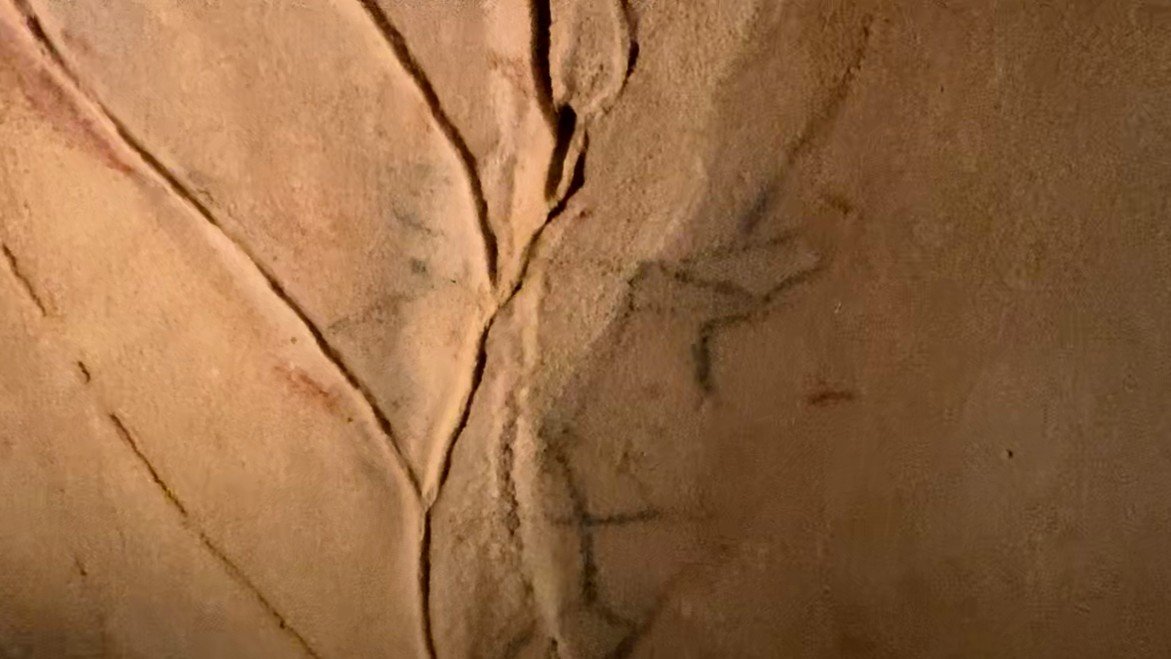Walk down the stairs, ducking your head beneath the stone ceiling. Wooden steps lead you down into the Earth. Electric lights have been installed to guide your way, but the silence and the still air remind you that you are in an ancient place. Duck down and follow the laser pointer of your guide. With her explanation, the marks on the wall take the shape of a horse’s belly and legs. These were painted here tens of thousands of years ago by humans who had no language, built no permanent structures, and lived as hunter-gatherers. The person who painted this could have been your great-great-[insert 1,000 “great”s]-grandfather.
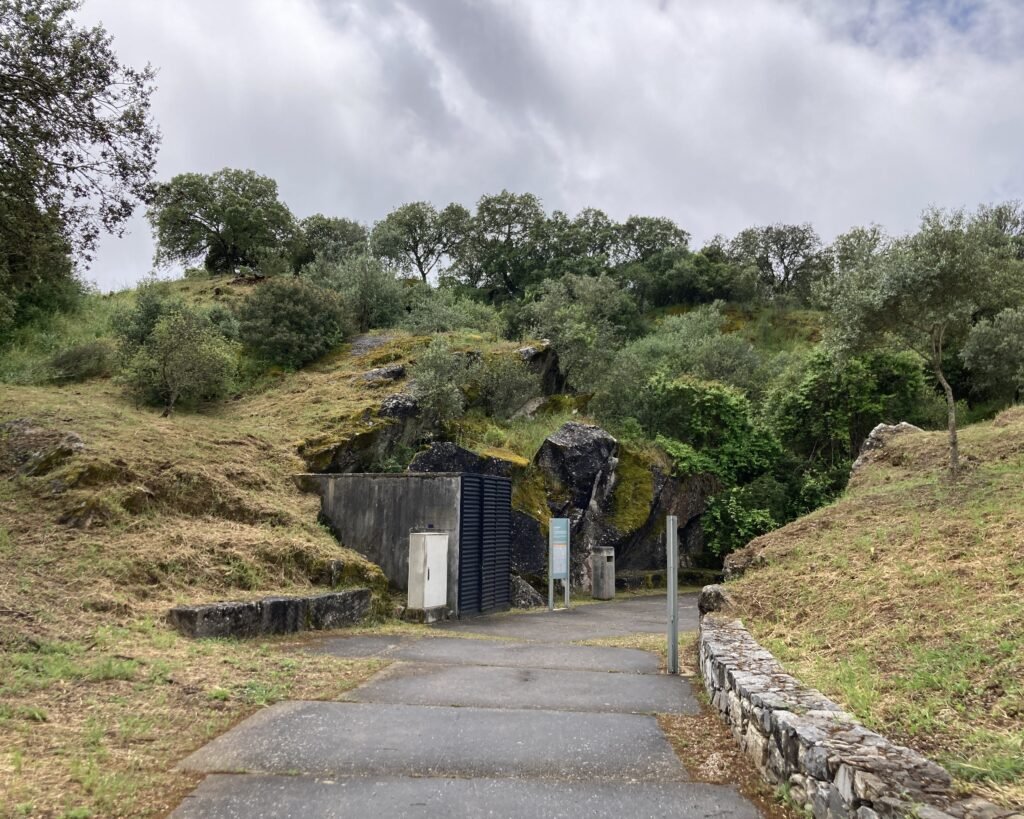
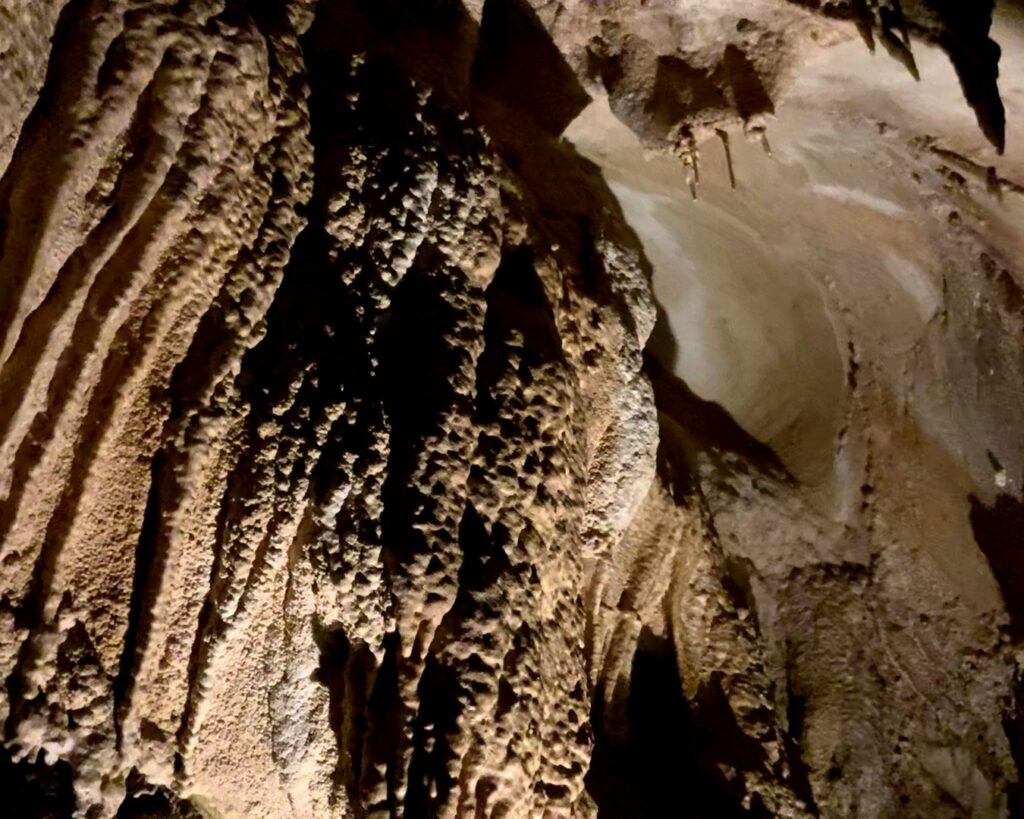
The Gruta do Escoural (“Escoural Cave”) is one of Portugal’s most significant archaeological sites. It is the only location of cave art in Portuguese territory, and the furthest west of any European cave art. It holds dozens of engraved and painted “artworks” – representations of animals, as well as abstract symbols.
In 1963 two workers at a marble quarry were surprised when a mining blast opened up a large cavern. They went inside and were astonished to see hundreds of bones. “As soon as we stepped inside and saw that skull,” Olímpio Graixinha, one of the workers, said, “we hightailed it out of there as quickly as we could.”1 They reported the find to the municipality and a few days later, researchers from the National Museum of Ethnology in Lisbon came to investigate.
Years of investigation revealed the extent: this cave extends hundreds of meters with many different chambers, housing a variety of carvings and paintings. These come from the Paleolithic period, from around 35,000BC to 8,000BC. The cave had been used before by Neanderthals as a shelter, and it was used later, in the Neolithic between 5,000BC and 3,000BC, as a burial site. The original opening was in a different location, but the opening that the mining blast caused has been adapted into a modern climate-controlled entrance, with electric lights, and wooden stairs and ramps.
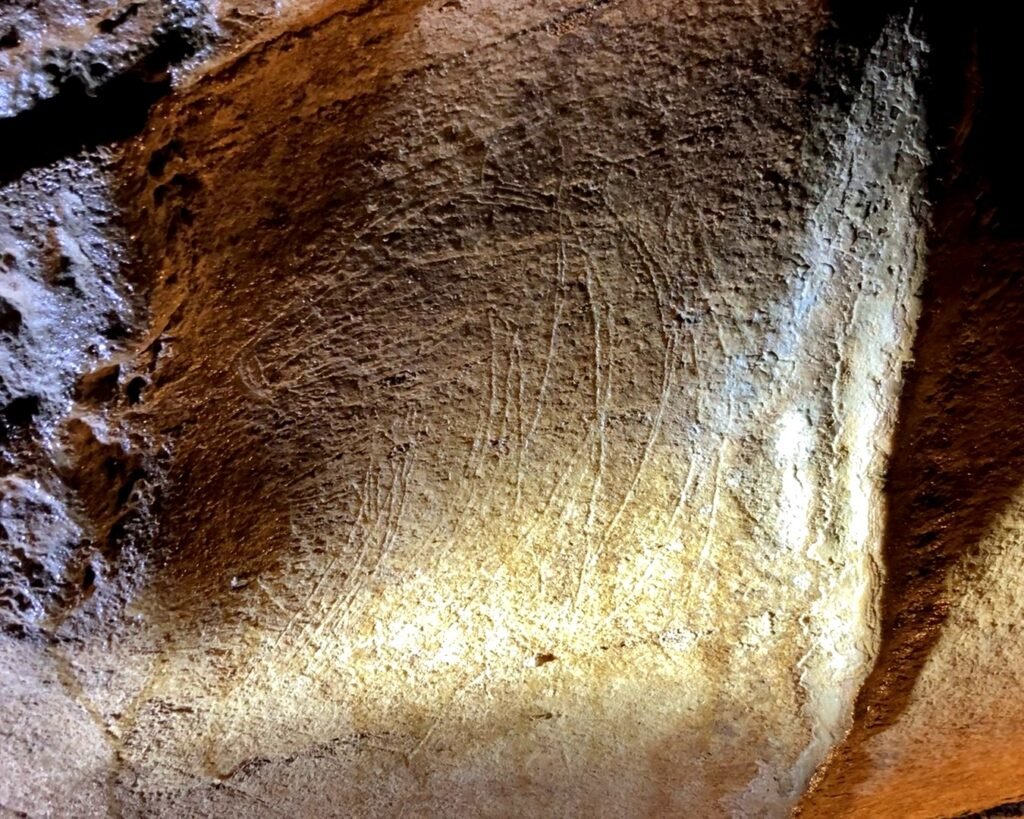
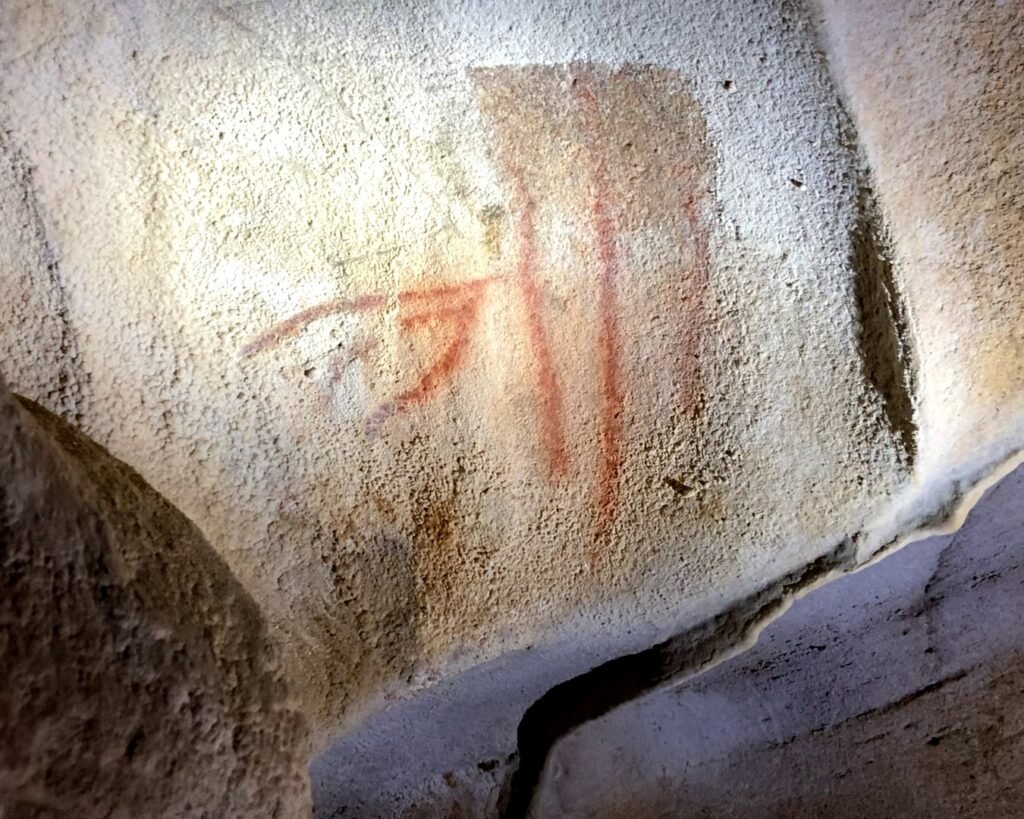
A visit to the caves is only by pre-arranged guided tours. (See “Access” below.) I booked a tour and requested permission to take photographs and video for this website and my YouTube channel, and was given permission. My tour guide, Sónia Contador, gave me loads of information and explained the paintings and carvings we visited. It is only possible to visit a few of the sites in the cave: many are difficult to reach, and all are still being studied by archaeologists.
The largest panel we examine is covered with lines of mineral deposits from seeping water. These deposits have obscured much of the paintings, but they also help to determine the paintings’ age: the thickness of the deposit shows how long the paintings have been there. The paintings are dated to around 20,000 years ago. The red and black lines don’t reveal much to an untrained eye, but archaeologists have carefully examined them and can identify portions of animal figures, both cattle and horses.2
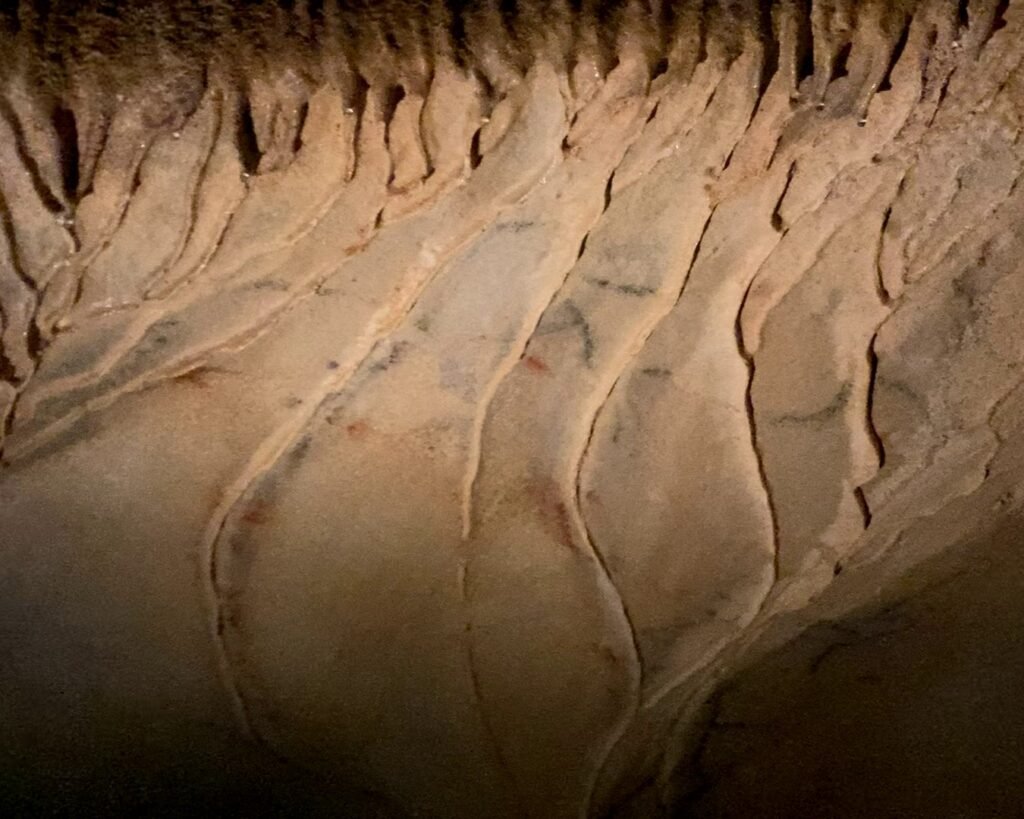
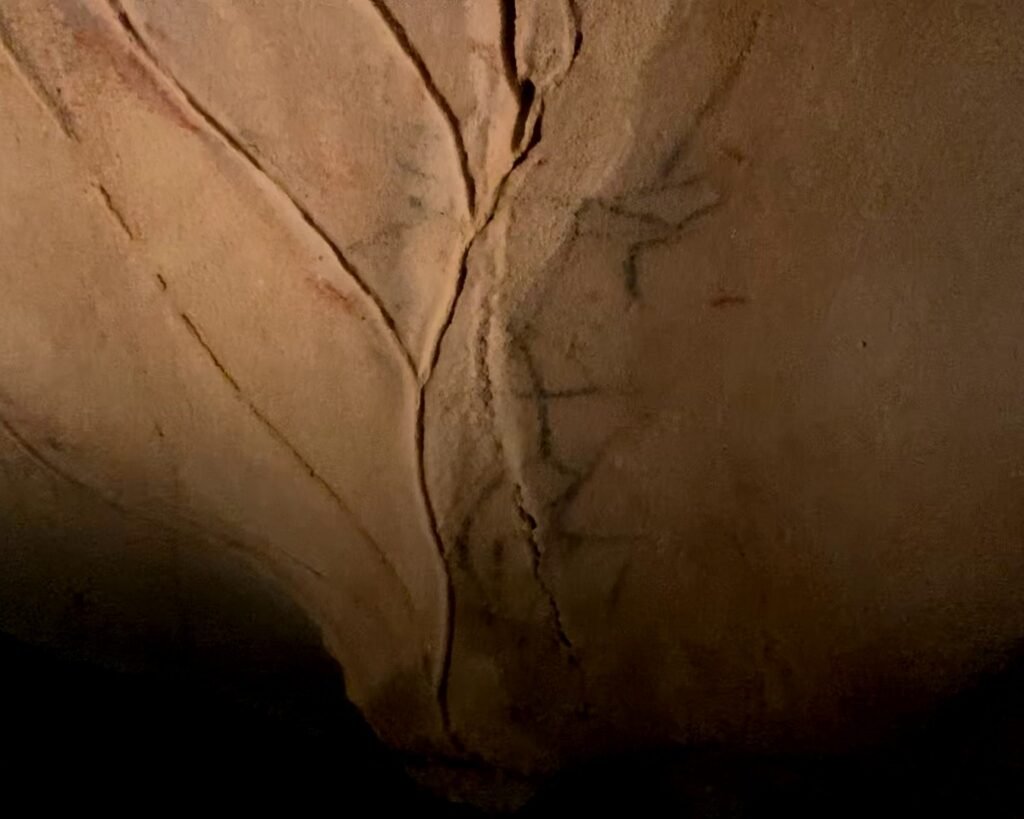
For a 3D tour of the cave, see this annotated (in English) model produced by the Global Digital Heritage:
The site has significance beyond the cave itself. On top of the hill in which it the cave is located, Neolithic rock art of a very different style (rocks with carved “cup marks” or covinhas) can be found, showing that the site must have been symbolically important for many thousands of years. There is also a Chalcolithic (Copper Age) settlement, with walls on top of Neolithic carved rocks. (I wasn’t allowed to visit it, as the climb is not controlled and the site is overgrown.) This shows that there was likely some kind of disruption – displacement? cultural evolution? – between the late Stone Age and the arrival of metalurgists.3 There is also a Chalcolithic tholos (a circular megalithic tomb) nearby, likely used by the people who lived in the settlement. (It is on private land and can only be visited with permission. Below is a 3D model of the tholos.)
In the town of Escoural, the interpretive centre has displays (in English and in Portuguese) which has excellent information about the cave, the archaeological discoveries, the tholos, and more. It’s free entry, and is an excellent place to learn more details about the cave and the related sites, to see some of the artefacts that were recovered, and to get more context of the cave.
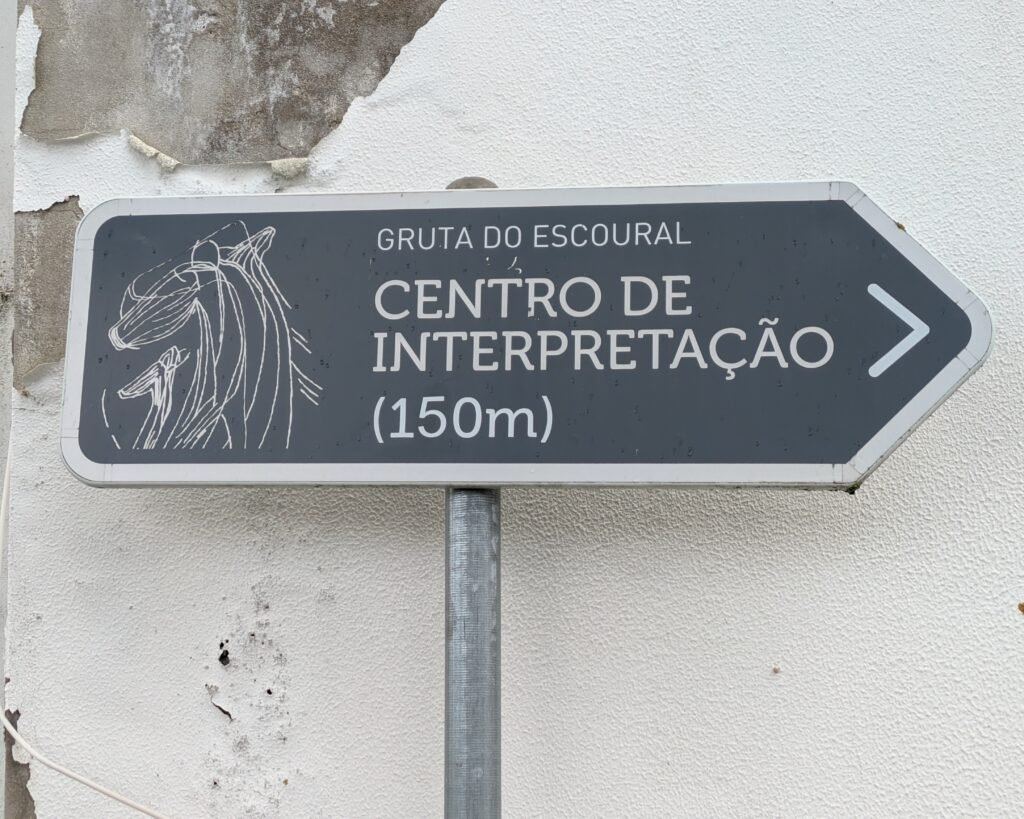

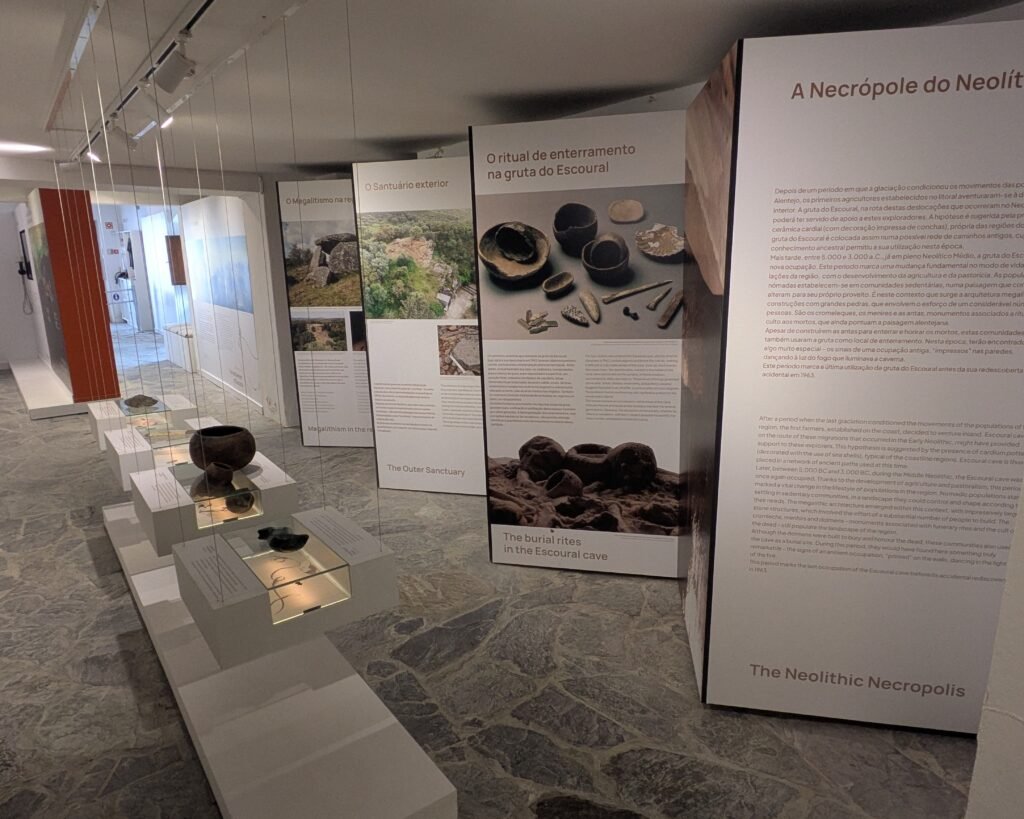


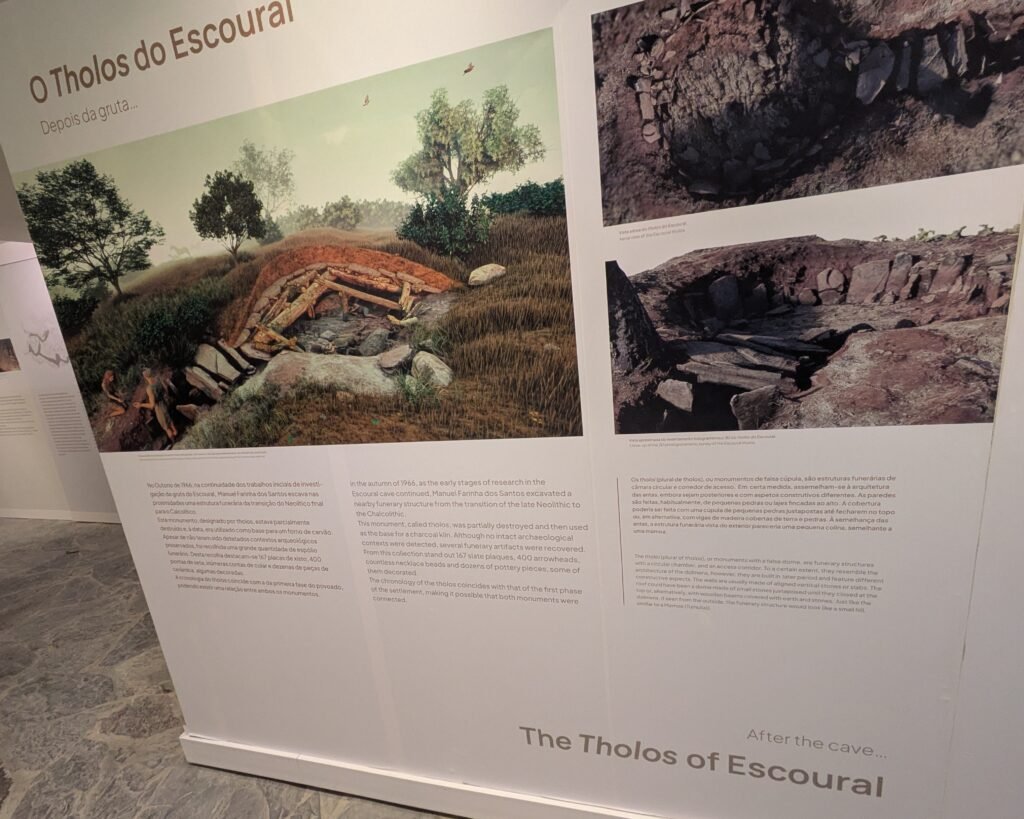
Location
The cave is in the Alentejo, district of Évora. It’s in the municipality of Montemor-o-Novo, in the parish of Santiago do Escoural.
The interpretive centre is in the town of Escoural, about 3km from the cave itself. (A visit to the interpretive centre is highly recommended!)
Access
People are allowed to visit the cave, but access is controlled to prevent overexposure and damage to the paintings and carvings.
- You can only visit the caves by making an appointment. You can get the contact details from the parish of Santiago do Escoural or the municipality of Montemor-o-Novo, or call 266 857 000 Admission is €3 for an adult. Tours can be conducted in English.
- Photography in the cave is not allowed. It is only permissible to take photographs if you make a formal request in advance, and give a valid reason.
Signage
There are signs around the area directing you to the “Gruta do Escoural.”

If you follow the signs, you’ll be met by a locked gate with the following sign telling you how to book a visit in advance:
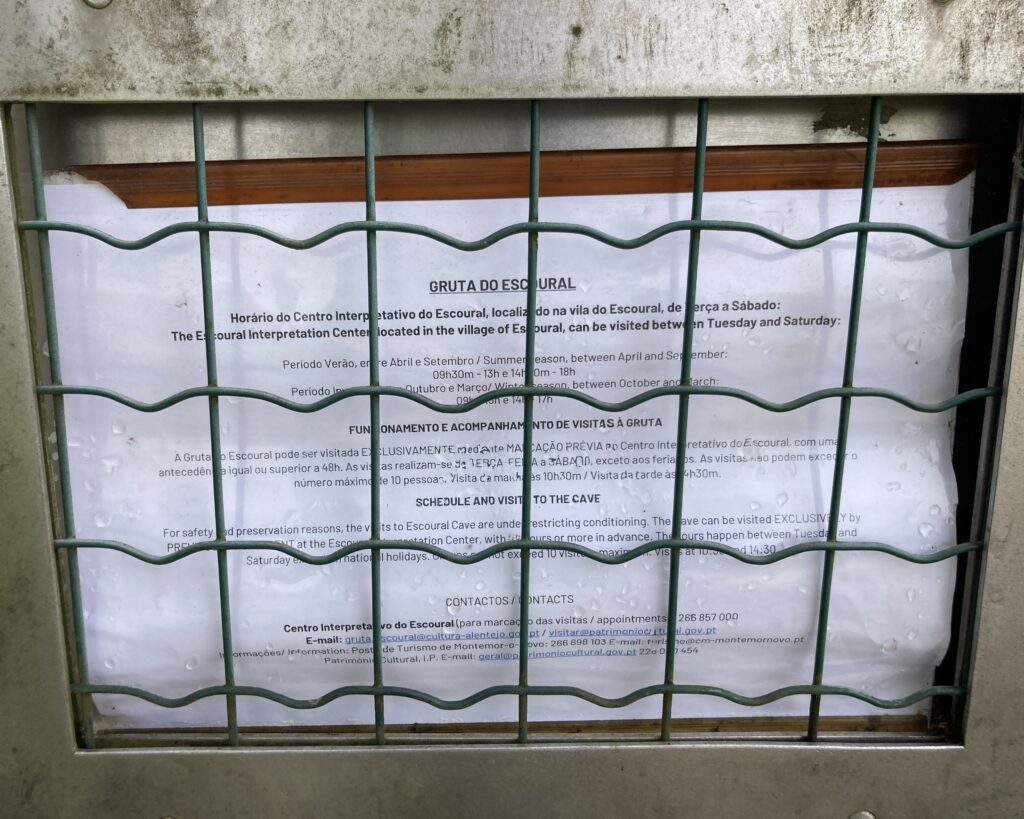
Links
- Article (in English) from Wikipedia
- Information (in English) from the Archaeological Guide to the Alentejo (sponsored by the University of Évora)
- Information (in Portuguese) from the Parish of Santiago do Escoural
- Information (in Portuguese) from the Municipality of Montemor-o-Novo
- Information (in English) from Archaeological Routes of the Alentejo
- 3D model (in English) from Global Digital Heritage
- Also scans/images of artwork inside the cave
- A blog post (in Portuguese) from “Memórias das Pedras Talhas” by archaeologist António Carlos Silva
- Video (no language) from Town Hall of Montemor-o-Novo
- Video (in Portuguese with English subtitles) from Mor Base
- Description (in Portuguese) from Archaeologist’s Portal of Directorate-General of Cultural Heritage
- Designation (in Portuguese) as a National Monument by the Directorate-General of Cultural Heritage
- Detailed information (in Portuguese) in the database of the Directorate-General of Cultural Heritage
Nearby
The nearest (5km) publicly visitable prehistoric site, is the Anta Capela de São Brissos, a dolmen that has been converted into a Christian chapel.
Sources
- “Gruta do Escoural: Centro Interpretativo” (exhibition guidebook) published by the Municipality of Montomar-o-Novo and Interreg España-Portugal, FirstArt ↩︎
- Gomes, Mário Varela. “Gruta do Escoural – Arte Parietal,” Ministério da Cultura, 35 pp., Lisboa, 2001. https://www.academia.edu/113529564/Gruta_do_Escoural_Arte_parietal ↩︎
- Silva, António Carlos. Gruta Do Escoural: Roteiros Da Arqueologia Portuguesa, No4. Lisboa, Instituto Português do Património Arquitectónico e Arqueológico, 1995, www.academia.edu/43753930/Gruta_do_Escoural. Accessed 15 June 2025. ↩︎
